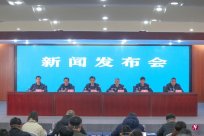(Beijing Comprehensive News) Since the Chinese government announced in early January this year, since the new policy of the first mortgage interest rate has been adjusted, at least 26 Chinese cities have lowered or canceled the lower limit of local loan interest rates in the local area, trying to re -ignite the enthusiasm of the public to buy a house.
According to Reuters and Economic Reference reports, the Shanghai Yiju Real Estate Research Institute pointed out in a report that Chinese cities that have taken relevant measures include Tianjin, Tianjin, and some provincial capitals, such as Zhengzhou and Fuzhou.
The People's Bank of China and the China Banking Regulatory Commission announced on January 6 that the sales prices of newly -built commercial housing were allowed to maintain, lower or cancel the lower limit of local housing loan interest rates in a period of three months and year -on -year declines.
The Chinese real estate market fell sharply last year, and house prices and sales fell. Developers under the Chinese government's crackdown on over -loan behavior and zero -epidemic prevention policy, and even suspended new projects on bonds due to maturity.
However, after the official launch of a series of policies to support the housing market, and abandoning the clear zero policy that adheres to the three years last December, China's real estate industry showed signs of recovery.However, fragile demand is still a key constraints for a comprehensive recovery.
According to a report released by the China Index Research Institute on Wednesday (February 1), the sales of houses calculated based on the construction area of the China Index (February 1) decreased by about 20%year -on -year in January, which continued the decline in December 2022.This shows that although the number of people going to see houses in several major cities has increased, most people still wait and see.
The quarterly investigation of the central bank in December 2022 also shows that only 16%of the residents interviewed planned to buy a house within the next three months, the lowest level since the third quarter of 2016.


